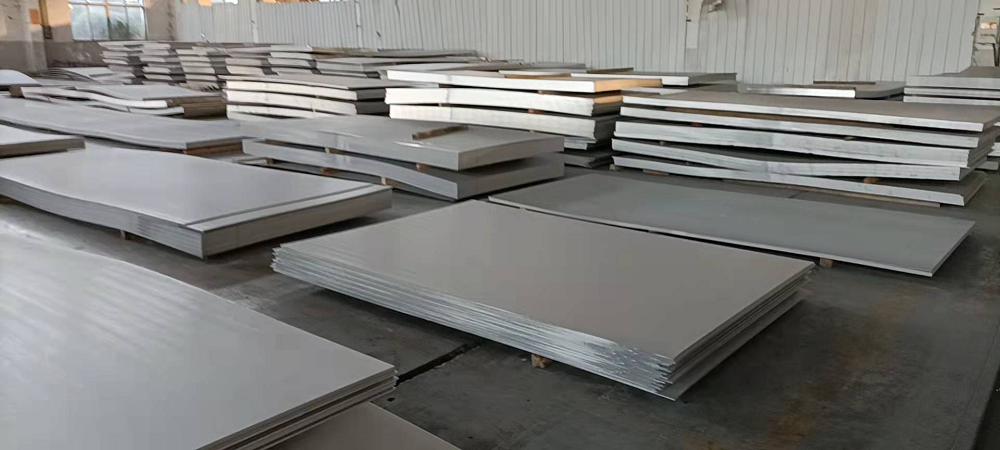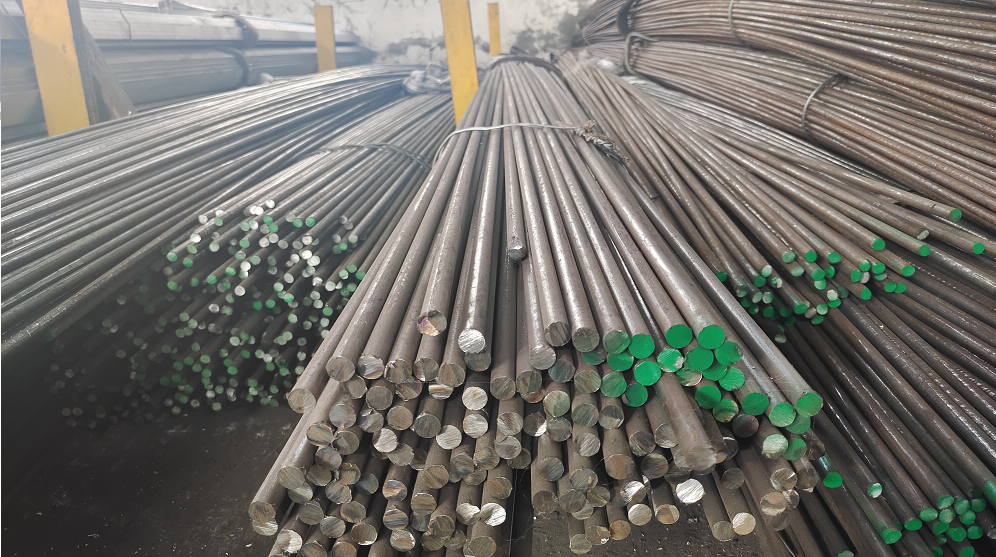Dupleks ze stali nierdzewnej odnosi się do materiału, którego mikrostruktura składa się z ferrytu i austenitu, z których każdy stanowi około 50%. W rzeczywistości bardziej odpowiednie jest, aby jedna z faz była między 40 do 60%.
Zgodnie z charakterystyką struktury dwufazowej, poprzez właściwe kontrolowanie procesu składu chemicznego i uzdatniania ciepła, doskonała wytrzymałość i spawalność austenitycznej stali nierdzewnej łączą się z wyższą wytrzymałością i odpornością na naprężenie chlorkowe i wytwarzanie stali ferrytycznej. Ich właściwości fizyczne znajdują się między austenityczną stalą nierdzewną i ferrytyczną stalą nierdzewną, ale bliżej ferrytycznej stali nierdzewnej i stali węglowej. Odporność na wżery chlorkowe i korozję szczelinowej dupleksowej stali nierdzewnej jest związana z zawartością chromu, molibdenu i azotu. Jego odporność na korozję wżery i szczelinowej może być podobna do 316 stali nierdzewnej lub wyższej niż stali nierdzewnej dla wody morskiej, takiej jak 6%MO Austenitic stal nierdzewna. Wszystkie dupleksowe stale nierdzewne są znacznie bardziej odporne na pękanie korozji naprężeń chlorkowych niż austenityczne stali nierdzewne z serii 300, a ich wytrzymałość jest również znacznie wyższa niż austenityczne stale nierdzewne, jednocześnie wykazując dobrą plastyczność i wytrzymałość.
Różne formy produktów stali nierdzewnej dupleks: płyty i paski rur - rurki i szwane rurki Odchowy
Dupleksowe stal nierdzewna można ogólnie podzielić na cztery kategorie:
Po pierwsze: Niski typ stopu, reprezentatywny stopień INFS32304, Stal nie zawiera molibdenu, PREN: 24-25, może zastąpić AISI 304 lub 316 pod względem odporności na korozję naprężeń.
Po drugie: Reprezentatywna ocena INSS31803, PREN: 32-33, Odporność na korozję odbywa się między AISI316L i 6%MO+N Austenitic Stal nierdzewna.
Po trzecie: Wysoki typ stopu, ogólnie zawierający 25% CR, zawiera również molibden i azot, niektóre zawierają również miedź i wolfram, standardowe stopnie to UNSS32550, PREN: 38-39, oporność na korozję jest wyższa niż 22% stali stali nierdzewnej.
Cztery: Super dupleks stal ze stali nierdzewnej, zawierający wysoką molabden i azot, standardowe stopnie to UNSS32750, niektóre zawierają również wolfram i miedź, PREN> 40, mogą być stosowane w trudnych warunkach średnich, z dobrą opornością na korozję i mechaniczną kompleksową właściwościami, porównywalnymi z super austelitarną stalą ze stali niesionowej. (Uwaga: PREN: Wartość równoważna oporności wżery)
Skład chemiczny Głównymi elementami stopowymi stali dupleksowej są Cr, Ni, Mo i N. Wśród nich Cr i Mo są używane do zwiększenia zawartości ferrytu, podczas gdy Ni i N są elementami stabilizującymi austenit. Niektóre stopnie stalowe mają również elementy takie jak MN, Cu i W. Cr, Ni i MO mogą poprawić odporność na korozję. Jego odporność na korozję wżery i szczeliny jest szczególnie dobra w środowiskach zawierających chlorek.
Zalety dupleksowej stali nierdzewnej
1. W porównaniu z austenityczną stalą nierdzewną
1) Wartość plastyczności jest ponad dwukrotnie większa niż zwykła austenityczna stal nierdzewna i ma wystarczającą plastyczność i wytrzymałość wymaganą do formowania. Grubość zbiorników magazynowych lub naczyń ciśnieniowych wykonanych ze stali nierdzewnej dupleksowej jest o 30-50% mniejsza niż powszechnie stosowana austenityczna stal nierdzewna, co sprzyja obniżaniu kosztów.
2) Ma doskonałą odporność na pękanie korozji naprężeń, szczególnie w środowiskach zawierających jony chlorkowe. Nawet dupleks ze stali nierdzewnej o najniższej zawartości stopu ma większą odporność na pękanie korozji naprężeń niż austenityczna stal nierdzewna. Korozja naprężenia jest wyraźnym problemem, że zwykła austenityczna stal nierdzewna jest trudna do rozwiązania. 3) Odporność na korozję najczęstszej dupleksowej stali nierdzewnej 2205 stosowanej w wielu pożywkach jest lepsza niż zwykła austenityczna stal nierdzewna 316L, a super dupleks ze stali nierdzewnej ma wyjątkowo wysoką odporność na korozję. W niektórych pożywkach, takich jak kwas octowy i kwas mrówkowy, może nawet zastąpić wysoko-płaski austenitycznej stali nierdzewnej, a nawet stopów opornych na korozję. 4) Ma dobrą lokalną odporność na korozję. W porównaniu z austenityczną stalą nierdzewną o tej samej zawartości stopu, jego odporność na korozję zużycia i odporność na zmęczenie korozji są lepsze niż austenityczna stal nierdzewna. 5) Współczynnik rozszerzania liniowego jest niższy niż austenityczna stal nierdzewna, zbliżona do stali węglowej, odpowiednia do połączenia ze stalą węglową, i ma ważne znaczenie inżynieryjne, takie jak wytwarzanie płyt kompozytowych lub linii.
2. W porównaniu z ferrytyczną stalą nierdzewną, zalety dupleksowej stali nierdzewnej są następujące:
1) Kompleksowe właściwości mechaniczne są wyższe niż właściwości ferrytycznej stali nierdzewnej, zwłaszcza wytrzymałości tworzyw sztucznych. Nie jest tak wrażliwy na kruchość jak ferrytyczna stal nierdzewna.
2) Z wyjątkiem odporności na korozję naprężeń, inne lokalne odporność na korozję jest lepsza niż ferrytyczna stal nierdzewna.
3) Wydajność przetwarzania zimnego i wydajność tworzenia zimna są znacznie lepsze niż ferrytyczna stal nierdzewna.
4) Wydajność spawania jest znacznie lepsza niż ferrytyczna stal nierdzewna. Zasadniczo przed spawaniem nie jest wymagane podgrzewanie i po spawaniu nie wymaga obróbki cieplnej.
5) Zakres aplikacji jest szerszy niż ferrytyczna stal nierdzewna.
Aplikacja
Ze względu na wysoką wytrzymałość stali dupleksowej często może oszczędzać materiały, takie jak zmniejszenie grubości ściany rury. Weź przykład SAF2205 i SAF2507W. SAF2205 nadaje się do stosowania w środowiskach zawierających chlor. Materiał ten nadaje się do rafinacji oleju lub innych mediów procesowych zmieszanych z chlorkami. SAF2205 jest szczególnie odpowiednie dla wymienników ciepła, które wykorzystują roztwory wodne zawierające chlor lub lekko słoną wodę jako pożywkę chłodzącą. Materiał ten jest również odpowiedni do rozcieńczonego roztworu kwasu siarkowego oraz czystych kwasów organicznych i ich mieszanin. Na przykład: rurki naftowe w przemyśle naftowym i gazowym: odsalanie ropy naftowej w rafineriach, oczyszczanie gazu zawierające siarkę, sprzęt do oczyszczania ścieków; Systemy chłodzenia przy użyciu nieco słonych roztworów zawierających wodę lub chlor.
Czas postu: luty-05-2025

